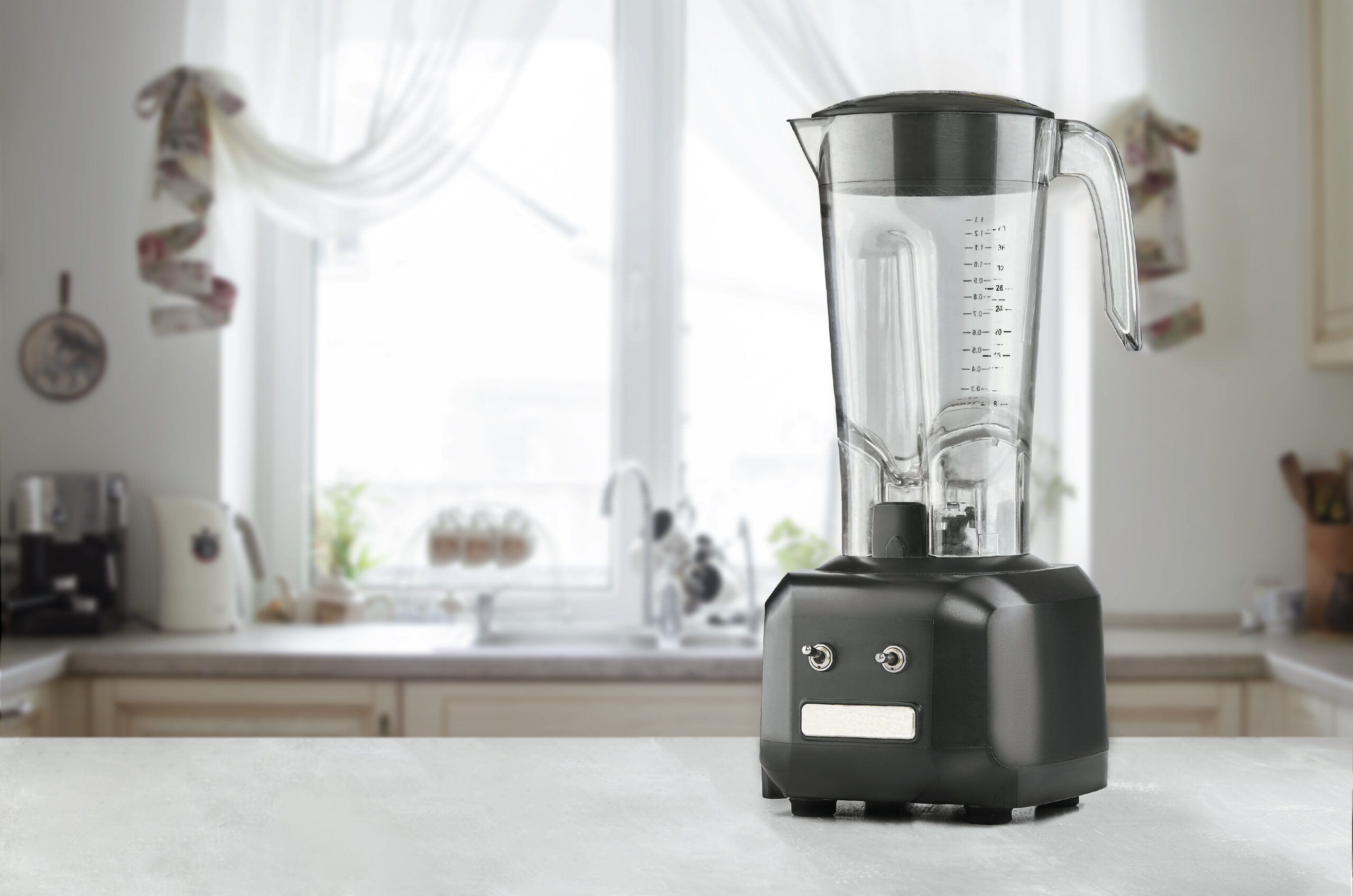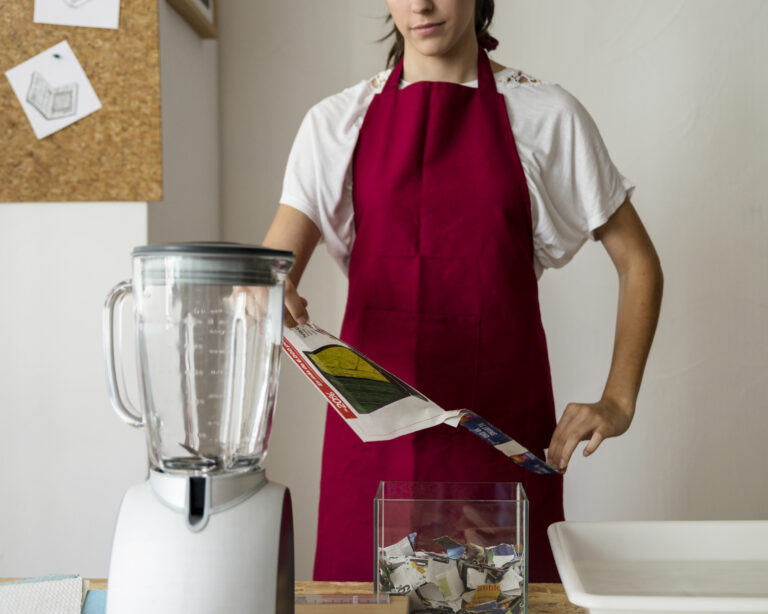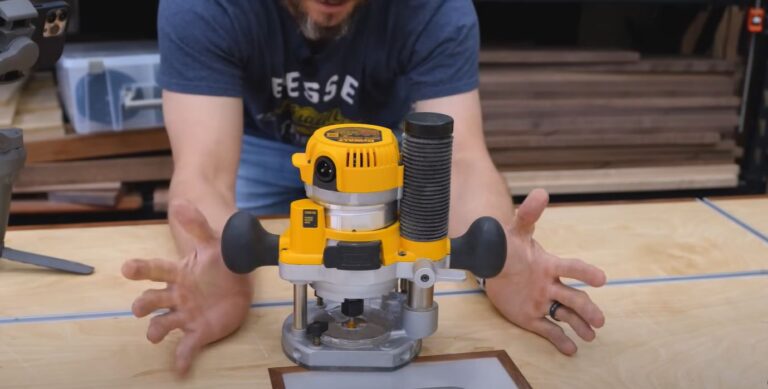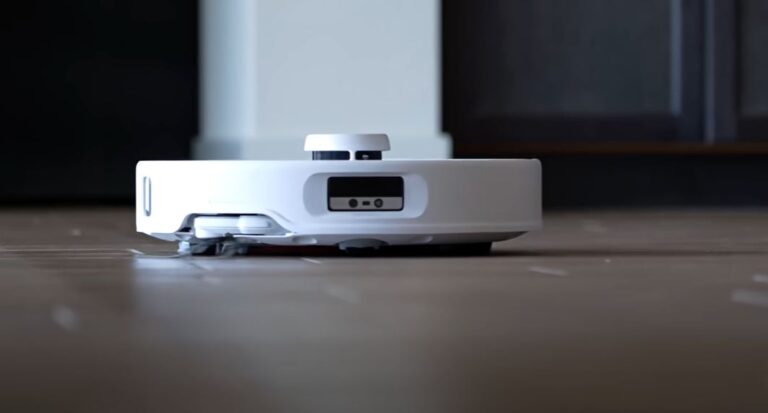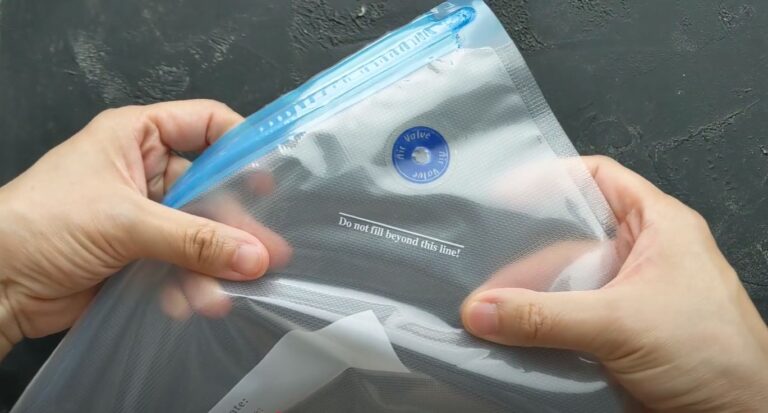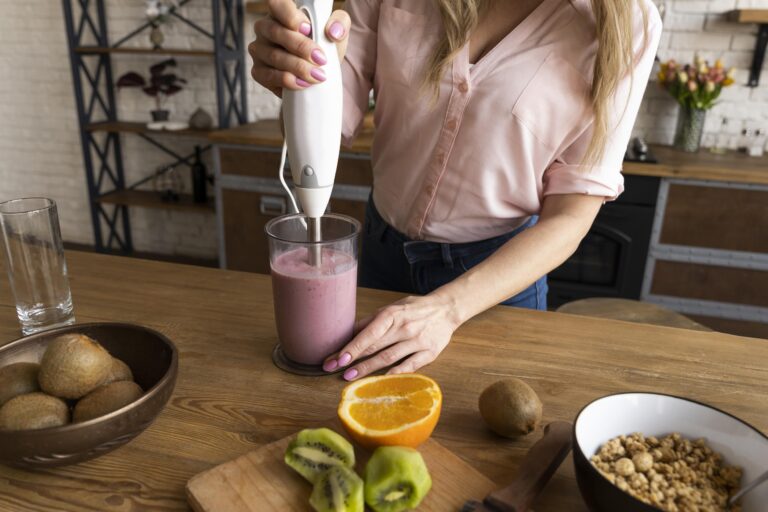Top 10 Best Blenders for Small Kitchens in 2025
The demand for compact kitchen appliances continues to rise, reflecting the needs of urban dwellers, apartment residents, and those embracing minimalistic living spaces.
The global blender market, now valued at over $20 billion, is fueled by innovations in design and functionality, catering to small kitchens where space is at a premium.
This comprehensive guide presents the 10 Best Blenders for Small Kitchens in 2025, offering an in depth exploration of top-performing models tailored for efficiency in constrained environments.
Each review includes a detailed overview, performance specifics, ideal use cases, pros and cons, pricing, and additional specifications, ensuring you can select the perfect blender to enhance your culinary experience without sacrificing space.
Top 10 Best Blenders for Small Kitchens in 2025
This section delves into the top 10 blenders, meticulously chosen for their ability to thrive in small kitchen settings. Each model is evaluated for its compact design, blending prowess, and practical features, providing a holistic view to guide your decision-making process.
1. NutriBullet Pro 900

- Overview: The NutriBullet Pro 900 is a highly regarded 900-watt personal blender, featuring a 32 oz cup that caters perfectly to individuals living in small kitchens. Its sleek, minimalist design and small footprint make it an essential tool for space-conscious users, blending seamlessly into dorms, apartments, or tiny countertops.
- Performance: This blender excels at creating smooth smoothies with a combination of berries, spinach, and almond milk in a swift 10–20 seconds. Equipped with a high-torque extractor blade, it effectively processes fibrous ingredients, though thicker mixtures may necessitate additional liquid or occasional stirring to achieve the desired consistency.
- Best For: Budget-conscious individuals or small households seeking a portable and efficient smoothie solution that fits snugly into limited kitchen spaces.
- Pros: Exceptionally compact with dimensions of 5.2 x 6.9 x 15.6 inches, it includes dishwasher-safe parts for easy cleanup and is priced affordably between $79 and $99. Its lightweight construction at 3.7 lbs ensures easy handling and storage.
- Cons: The absence of variable speed control restricts flexibility in blending options, and it may struggle with large ice cubes unless they are pre-crushed to avoid motor strain.
- Price: $79–$99.
- Additional Specs: Comes with a standard 1-year warranty, extendable to 3 years with registration, operates at a noise level of approximately 85 decibels, and features a single-speed operation for straightforward use.
2. Ninja Foodi Power Nutri DUO

- Overview: This 1100-watt personal blender stands out with its inclusion of 24 oz jars equipped with resealable spout lids, designed for on-the-go convenience in tight kitchen spaces. The dual-jar system enhances versatility without dominating counter space, making it a practical choice for small living areas.
- Performance: It blends protein shakes with frozen fruit and powder in 30–40 seconds, leveraging SmartTORQUE technology to prevent stalling on thick mixtures. The innovative rotating arms inside the jar ensure thorough blending without the need for manual stirring, optimizing efficiency.
- Best For: Fitness enthusiasts or individuals with small kitchens who require a portable yet powerful blending option for daily nutrition needs.
- Pros: Includes a specialized Smoothie Bowl Maker jar for thick blends, features dishwasher-safe parts for effortless cleaning, and is priced competitively at $99–$129. It weighs 6.3 lbs and stands at a manageable 14 inches tall, fitting under most cabinets.
- Cons: Can be noisy, reaching up to 90 decibels, and the multiple jars require additional storage space, which may pose a challenge in very small kitchens.
- Price: $99–$129.
- Additional Specs: Backed by a 1-year warranty, offers three auto-iQ programs for automated blending, and includes a 2.5-foot cord for flexible placement.
3. KitchenAid K150

- Overview: The KitchenAid K150 is a budget-friendly 650-watt blender featuring a 48 oz jar, crafted with a low-profile height to suit small kitchens. Its modern aesthetic and color options appeal to style-conscious users with limited space.
- Performance: It blends simple smoothies in 30–40 seconds, performing adequately with basic ingredients. However, it requires additional liquid for thicker mixes and may struggle with tough ingredients like ice unless pre-crushed to protect the motor.
- Best For: Casual users looking for an affordable, space-saving blender that adds a touch of elegance to a small kitchen setup.
- Pros: Maintains a low profile at 14.8 inches high, available in multiple colors to match decor, and is priced between $99 and $129. Its sturdy base weighs 11.3 lbs, providing stability during operation.
- Cons: Limited power restricts its capability for heavy-duty tasks, and the one-year warranty may feel insufficient for long-term use.
- Price: $99–$129.
- Additional Specs: Offers 3 speeds plus a pulse function, includes a self-clean cycle for convenience, and operates at a noise level of around 80 decibels.
4. Breville Fresh & Furious

- Overview: This 1100-watt blender features a 50 oz jar and a compact design, making it an excellent choice for small kitchens where quiet operation and modern functionality are prized. Its sleek build complements minimalistic interiors.
- Performance: It blends frozen drinks and smoothies in 40 seconds, supported by nine one-touch presets and a self-clean cycle that enhances its practicality for busy schedules.
- Best For: Users desiring a stylish, quiet blender that fits seamlessly into limited kitchen spaces without compromising performance.
- Pros: Operates quietly at 70–75 decibels, includes a self-cleaning feature for easy maintenance, and is priced at $199. Its dimensions are 6.5 x 8.5 x 16 inches, with a weight of 10 lbs for balanced stability.
- Cons: The plastic base may show wear over extended use, and occasional blade wobble has been reported, requiring careful monitoring.
- Price: $199.
- Additional Specs: Comes with a 1-year warranty, offers five speed settings for versatility, and includes a cord storage compartment to minimize clutter.
5. NutriBullet Ultra

- Overview: An upgraded 1200-watt personal blender, the NutriBullet Ultra features a 32 oz Tritan Renew cup made with 50% recycled content, tailored for small kitchen efficiency with an eco-friendly edge.
- Performance: It blends thick smoothies with avocado and nuts in 20–30 seconds, delivering a creamy texture with its titanium-coated blades. Its quieter operation compared to earlier models, at around 90 decibels, suits shared living spaces.
- Best For: Eco-conscious users needing a powerful, compact blender for daily use in a small kitchen environment.
- Pros: Constructed with sustainable materials, offers a 1–4 year warranty option, and is priced at $129–$150. Its compact footprint measures 5 x 4.75 x 14 inches.
- Cons: Heavier at 10.14 lbs, which may require more effort to move, and the suction cup feet may weaken with prolonged use on certain surfaces.
- Price: $129–$150.
- Additional Specs: Includes a pulse function for texture control, dishwasher-safe components, and titanium-coated blades for enhanced durability.
6. Ninja Blast

- Overview: A cordless 400-watt personal blender with an 18 oz cup, the Ninja Blast is designed for small kitchens and portability, emphasizing convenience for users on the move.
- Performance: It blends smoothies in 30 seconds, effectively handling frozen fruit with its six-blade design, though it is best suited for small batches due to its limited capacity.
- Best For: On-the-go users with minimal kitchen space who need a lightweight and convenient blending solution.
- Pros: Extremely lightweight at 1.6 lbs, fits car cup holders for portability, and is priced affordably at $59–$79. It stands just 7 inches tall when assembled.
- Cons: Limited power restricts its ability to handle tough ingredients, and the small capacity may not suffice for larger servings.
- Price: $59–$79.
- Additional Specs: Features USB-C charging for up to 15+ cycles, backed by a 1-year warranty, and operates at a noise level of around 75 decibels.
7. Hamilton Beach Power Elite

- Overview: This 700-watt blender comes with a 40 oz glass jar, offering a slim footprint that suits small kitchens while providing a durable build for everyday use.
- Performance: It blends basic smoothies in 30–40 seconds, performing well with soft ingredients, though it struggles with fibrous greens or large ice cubes without multiple blending cycles.
- Best For: Budget users seeking a simple, space-efficient blender with long-term reliability for small kitchen settings.
- Pros: Affordable at $39–$59, the glass jar resists staining and scratching, and it includes a 3-year warranty. Its dimensions are 6.9 x 8.6 x 14.7 inches.
- Cons: Limited power hampers its performance with tougher blends, and its basic feature set may not satisfy advanced users.
- Price: $39–$59.
- Additional Specs: Offers 12 blending functions, utilizes a wave-action system for consistent mixing, and weighs 7.5 lbs for stability.
8. Beast Mini Blender

- Overview: A sleek 600-watt personal blender with a 24 oz jar, the Beast Mini Blender is optimized for small kitchen aesthetics and functional design, appealing to those who value style.
- Performance: It blends smoothies in 30–40 seconds, performing admirably with soft ingredients, but it requires pre-crushed ice to achieve optimal results and avoid motor overload.
- Best For: Style-conscious users with limited counter space who seek a premium-looking blender with practical capabilities.
- Pros: Features a compact design at 5.1 x 5.1 x 15.8 inches, is easy to clean with dishwasher-safe parts, and is priced at $95–$120. It weighs 4.7 lbs.
- Cons: Lower power limits its suitability for heavy-duty tasks, and the higher cost may not justify its capacity for some users.
- Price: $95–$120.
- Additional Specs: Backed by a 1-year warranty, equipped with stainless steel blades, and operates at a noise level of around 80 decibels.
9. Zwilling Enfinigy Personal Blender

- Overview: This 500-watt personal blender features a 17 oz cup, crafted for small kitchens with a focus on minimalist design and precision engineering from Germany.
- Performance: It blends smoothies in 20–30 seconds, delivering smooth results with soft ingredients, though it is less effective with ice due to its lower power output.
- Best For: Minimalist kitchens needing a stylish, compact option with reliable performance for light blending tasks.
- Pros: Lightweight at 3.3 lbs, easy to store with a 4.7 x 4.7 x 13.2-inch footprint, and priced at $99–$129.
- Cons: Limited power restricts its ability to handle tough blends, and the small capacity may not meet higher volume needs.
- Price: $99–$129.
- Additional Specs: Comes with a 2-year warranty, includes a safety lock system for secure operation, and operates at a noise level of around 78 decibels.
10. Magic Bullet Blender

- Overview: A 250-watt personal blender with an 18 oz cup, the Magic Bullet is ideal for the smallest kitchens, offering basic blending needs with ultra-compact storage capabilities.
- Performance: It blends simple smoothies in 30–40 seconds, performing best with soft ingredients, but it struggles with ice or thick mixes due to its low power.
- Best For: Budget users with minimal space and light blending requirements, seeking an affordable and space-saving solution.
- Pros: Ultra-compact at 4.1 x 4.1 x 11.6 inches, priced affordably at $39–$49, and easy to store with a weight of 1.9 lbs.
- Cons: Low power limits versatility for advanced recipes, and the small capacity restricts batch sizes.
- Price: $39–$49.
- Additional Specs: Backed by a 1-year warranty, features a cross-blade design for efficient blending, and operates at a noise level of around 85 decibels.
Factors to Consider for Small Kitchens
Selecting the ideal blender for a small kitchen involves a careful balance of size, power, and functionality to maximize efficiency without cluttering limited space.
Size and Height: Opt for models with a height under 15–16 inches (e.g., KitchenAid K150 at 14.8 inches, NutriBullet Pro 900 at 15.6 inches) to ensure compatibility with under-cabinet storage. Widths under 6 inches (e.g., Ninja Blast at 3.5 inches, Magic Bullet at 4.1 inches) help preserve valuable counter space.
Capacity: Personal blenders with capacities ranging from 17 oz to 32 oz (e.g., Zwilling Enfinigy, NutriBullet Ultra) are perfect for single servings, while compact jugs from 40 oz to 50 oz (e.g., Breville Fresh & Furious) accommodate small batches without overwhelming the kitchen.
Power: A range of 500–1100 watts is generally sufficient for smoothies and light tasks, with higher wattage options like the NutriBullet Ultra (1200W) providing the muscle for tougher ingredients such as nuts or ice.
Storage: Blenders with detachable parts (e.g., Ninja Blast, Zwilling Enfinigy) or integrated cord storage (e.g., Hamilton Beach Power Elite) optimize space utilization in cramped quarters. Cleaning: Self-clean cycles (e.g., Breville Fresh & Furious, NutriBullet Ultra) or dishwasher-safe components streamline maintenance, crucial in small sinks where space and time are at a premium.
Tips for Optimal Use
To ensure the best performance from your blender in a small kitchen setting, consider the following practical tips:
- Ingredient Order: Start the blending process with 8–12 oz of liquid (such as water, milk, or juice) to create a stable base, followed by softer items like bananas or yogurt, and then add frozen fruits or ice. This sequence enhances blending efficiency and protects the motor from undue strain.
- Pulse Technique: For thicker mixtures or ingredients like ice, use short pulses lasting 2–3 seconds to prevent overloading the motor, particularly with lower-wattage models such as the Magic Bullet, which may lack the power for continuous blending.
- Immediate Cleaning: Rinse the blender with warm, soapy water or activate a self-clean cycle immediately after use to prevent residue buildup. This is especially important for sticky ingredients like nut butters or avocado, ensuring hygiene and ease of maintenance in a confined space.
Frequently Asked Questions (FAQs)
1. What makes a blender ideal for small kitchens?
A blender designed for small kitchens should feature a compact footprint, typically under 16 inches in height, and a capacity ranging from 17 to 50 oz to suit varying needs without dominating the space. Easy storage options, such as detachable parts or cord management, are essential. Models like the NutriBullet Pro 900 and Ninja Blast exemplify this by offering portability and efficient performance tailored for limited areas, making them perfect for daily use in constrained environments.
2. Can these blenders handle ice and frozen ingredients?
Yes, these blenders can process ice and frozen ingredients, but their effectiveness depends on the model’s power. Higher-wattage options like the NutriBullet Ultra (1200W) and Breville Fresh & Furious (1100W) manage ice proficiently in 20–40 seconds, delivering smooth results. Conversely, lower-wattage models like the Magic Bullet (250W) require pre-crushed ice or additional liquid to avoid motor strain, often necessitating longer blending times or multiple cycles.
3. How do I clean a small kitchen blender effectively?
To maintain your blender effectively, clean it immediately after use to prevent residue from hardening. Self-cleaning models like the Breville Fresh & Furious utilize a 30–60 second cycle with warm water and a drop of dish soap. For other models, hand-wash the blade base with a soft brush (e.g., Ninja Blast) to avoid damage, and take advantage of dishwasher-safe parts where applicable to conserve space and effort in a small sink.
4. Is a high-wattage blender necessary for small kitchens?
Not necessarily. For basic smoothie preparation, 500–900 watts (e.g., Zwilling Enfinigy at 500W, NutriBullet Pro 900 at 900W) are adequate, producing results in 20–40 seconds. For more demanding tasks such as making nut butters or processing ice-heavy blends, 1100+ watts (e.g., NutriBullet Ultra) are preferable. However, space constraints in small kitchens may reduce the necessity for high-wattage models unless frequent heavy-duty blending is planned.
5. Which blender is best for the smallest kitchen?
The Magic Bullet ($39–$49) is the optimal choice for the smallest kitchens, boasting an 18 oz capacity within a compact 4.1 x 4.1 x 11.6-inch footprint. It excels at basic smoothies and is ideal for minimalists with limited space, though its 250-watt power limits it to light-duty tasks, making it a practical yet constrained solution.
Conclusion
As of July 31, 2025, the 10 Best Blenders for Small Kitchens in 2025 address a diverse array of needs, ranging from budget-friendly essentials to powerful and portable options. The NutriBullet Pro 900 ($79–$99) takes the lead as the top choice, delivering a compact 32 oz capacity and reliable 900-watt performance for smoothies, making it an ideal fit for small-space living. The Ninja Foodi Power Nutri DUO ($99–$129) shines for protein shakes, offering 24 oz jars and 1100 watts of power, perfect for fitness-focused users with limited room. For the tiniest kitchens, the Magic Bullet ($39–$49) provides an affordable, ultra-compact solution that meets basic blending needs without overwhelming the space.
These blenders span a power range from 250 to 1200 watts, with capacities varying from 17 oz to 50 oz, ensuring flexibility for single servings or small batches to suit different household sizes. Warranties extend from 1 year (e.g., Ninja Blast, Magic Bullet) to 4 years (e.g., NutriBullet Ultra with extension), reflecting varying levels of durability tailored for frequent use in constrained environments. When making your selection, consider your primary use case—smoothies on a budget for $39–$99 (Magic Bullet, NutriBullet) or versatile blending for $99–$199 (Ninja, Breville)—alongside factors such as height, storage requirements, and cleaning convenience. By leveraging the provided tips and FAQs, you can maximize your blender’s potential, ensuring consistent, delicious results that enhance your 2025 small kitchen adventures.

